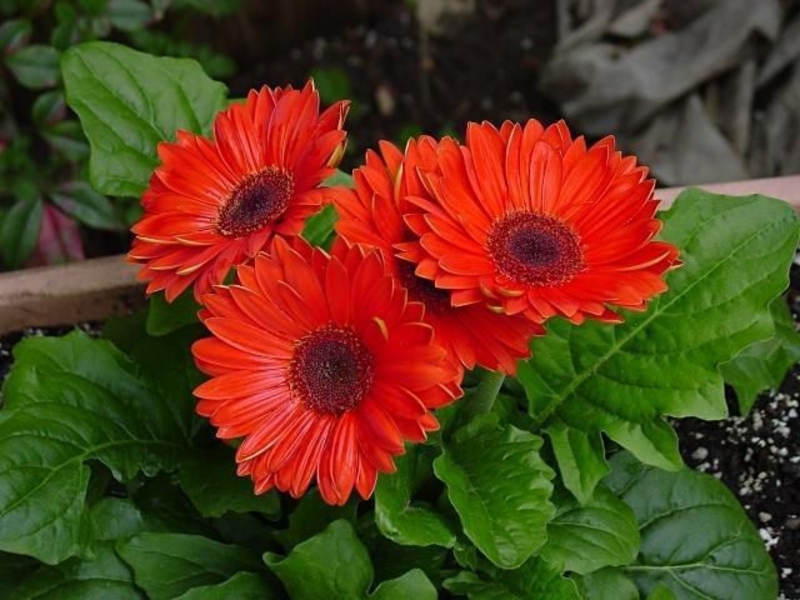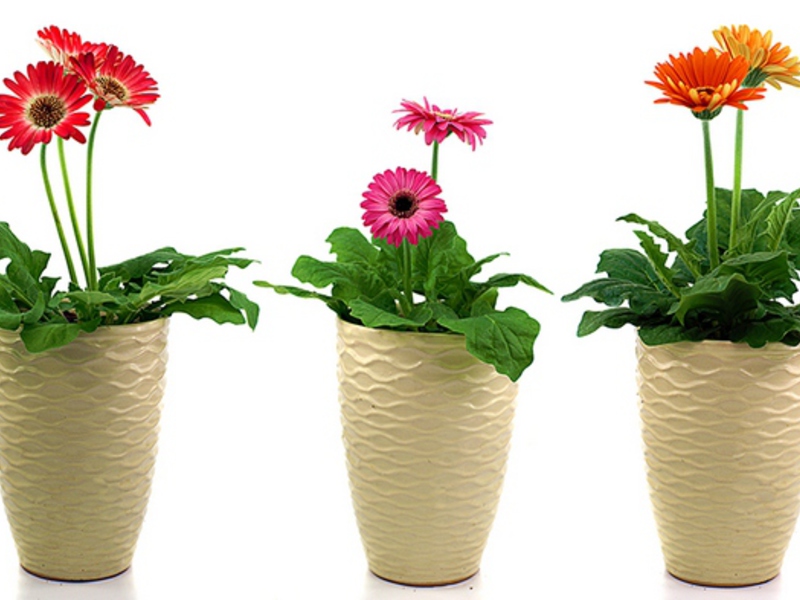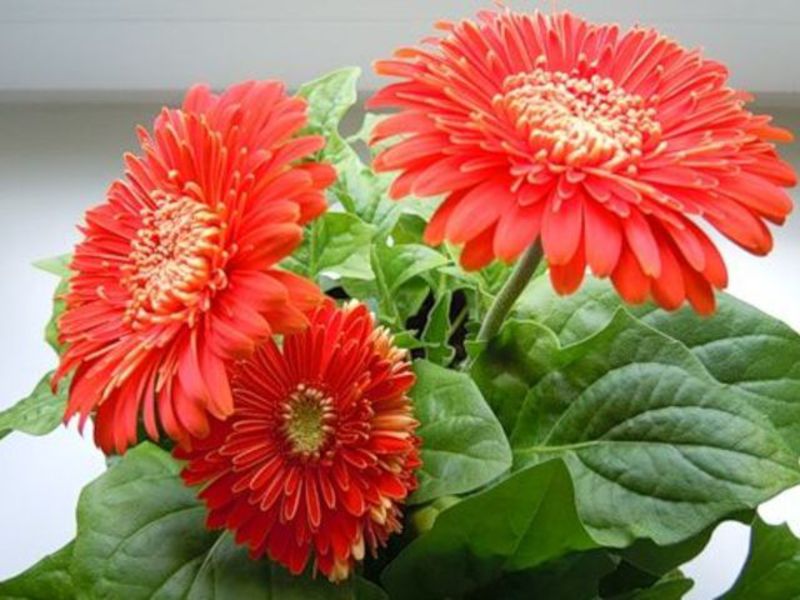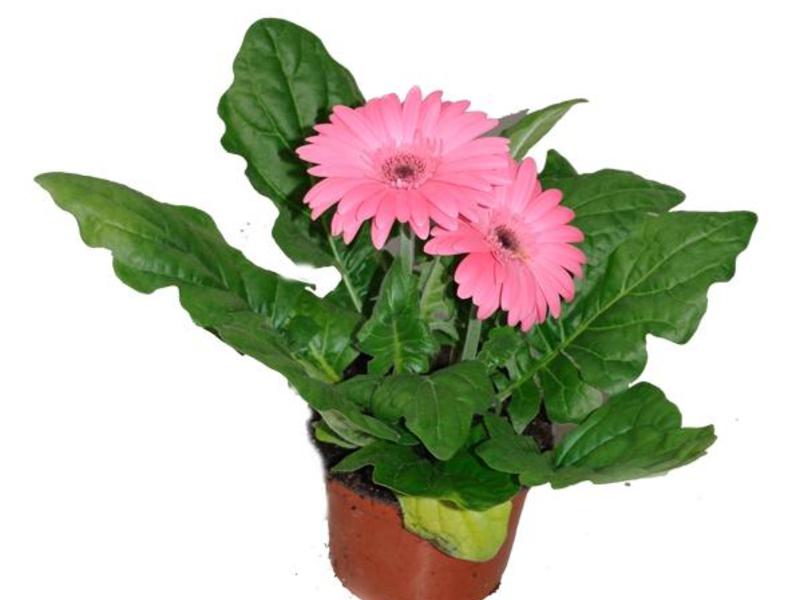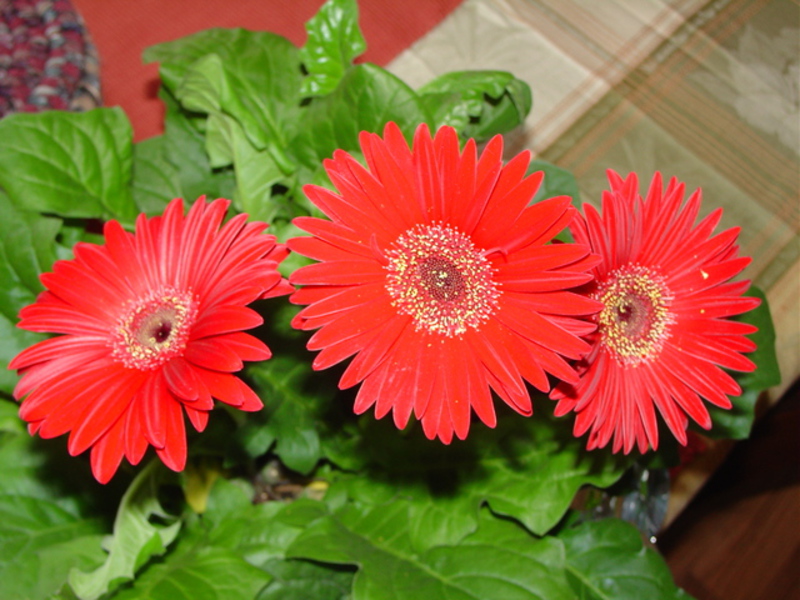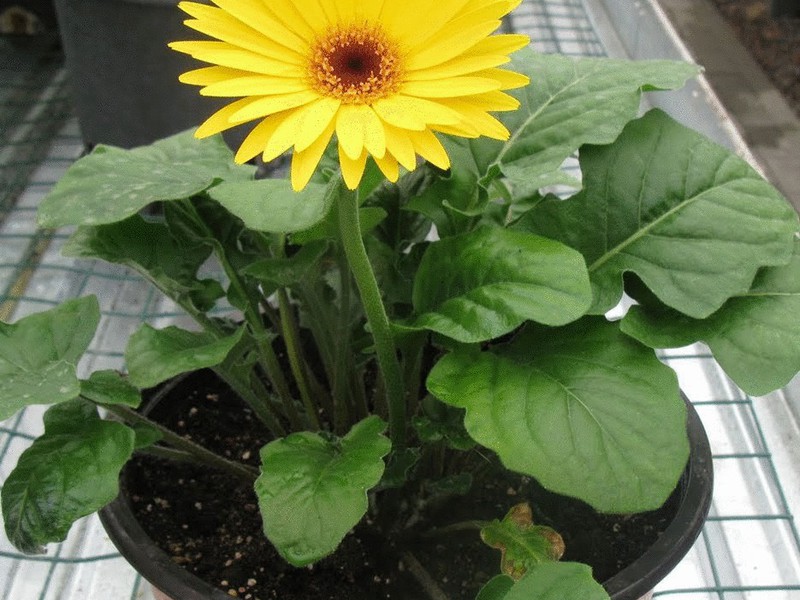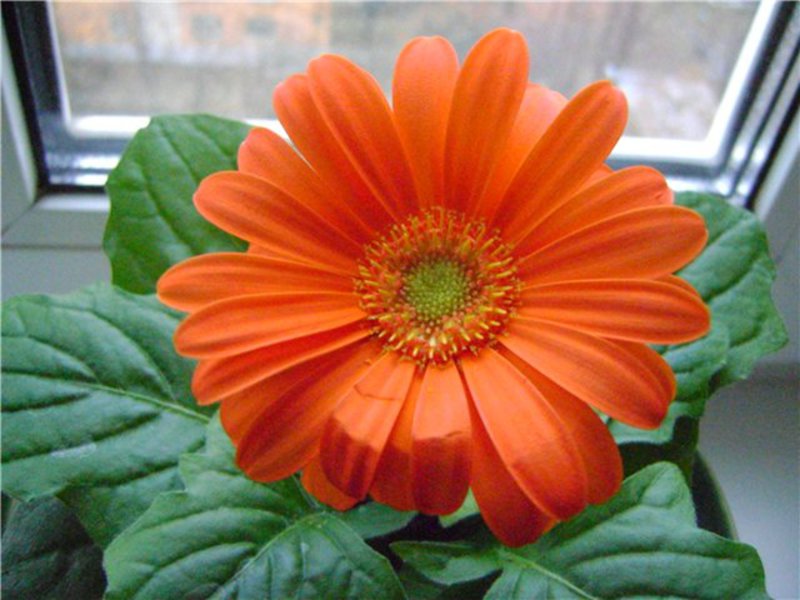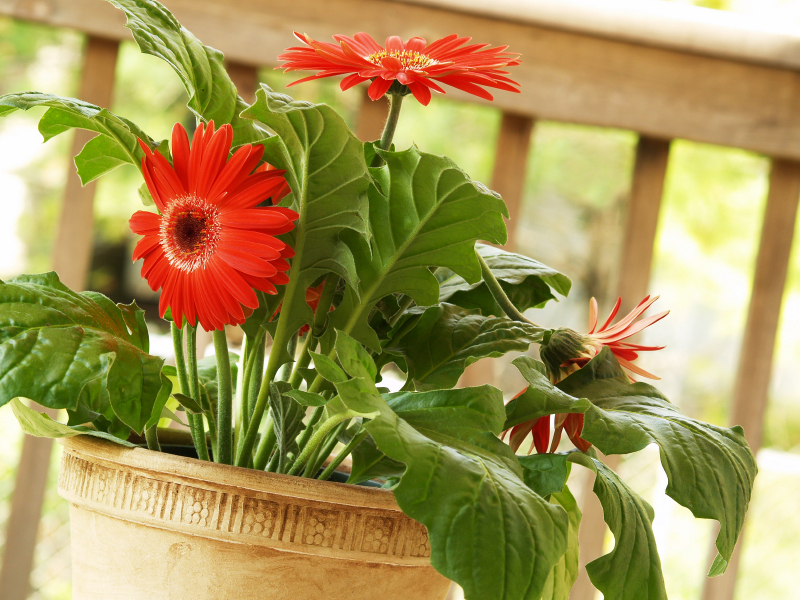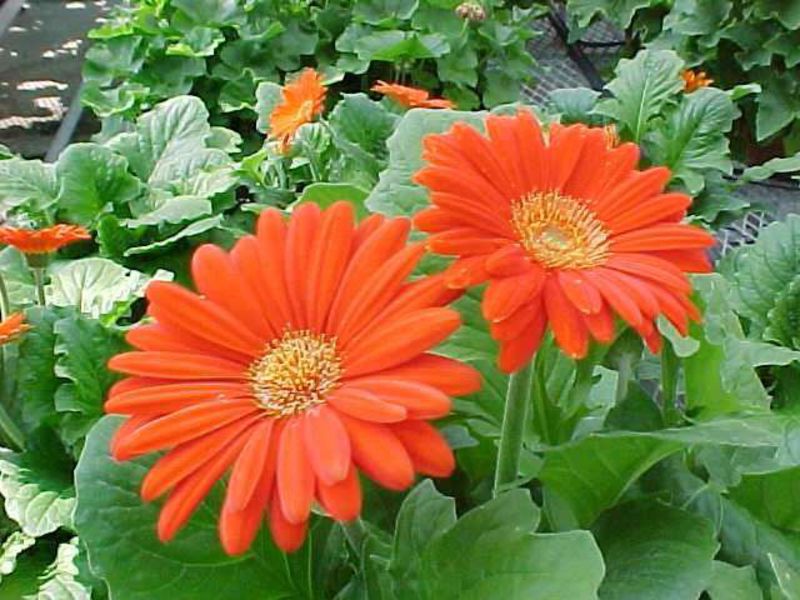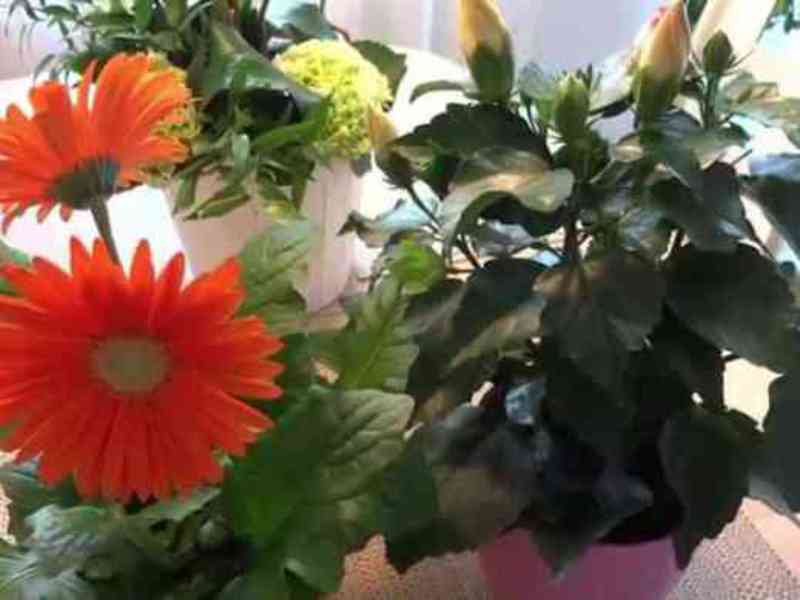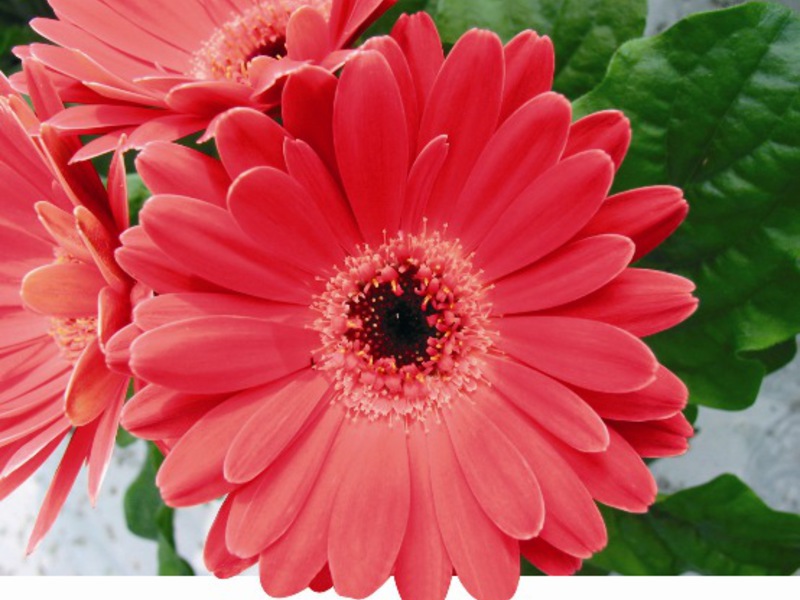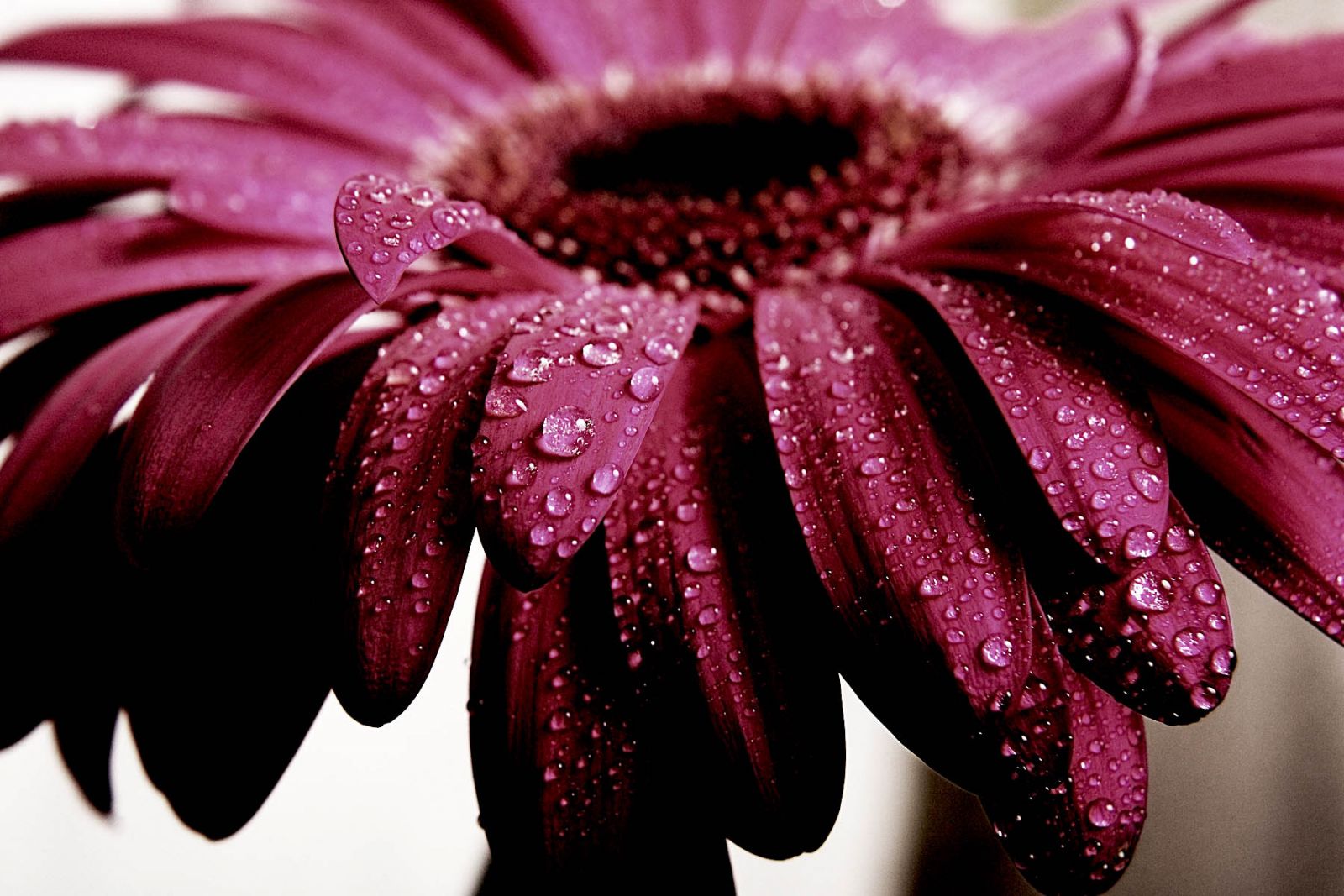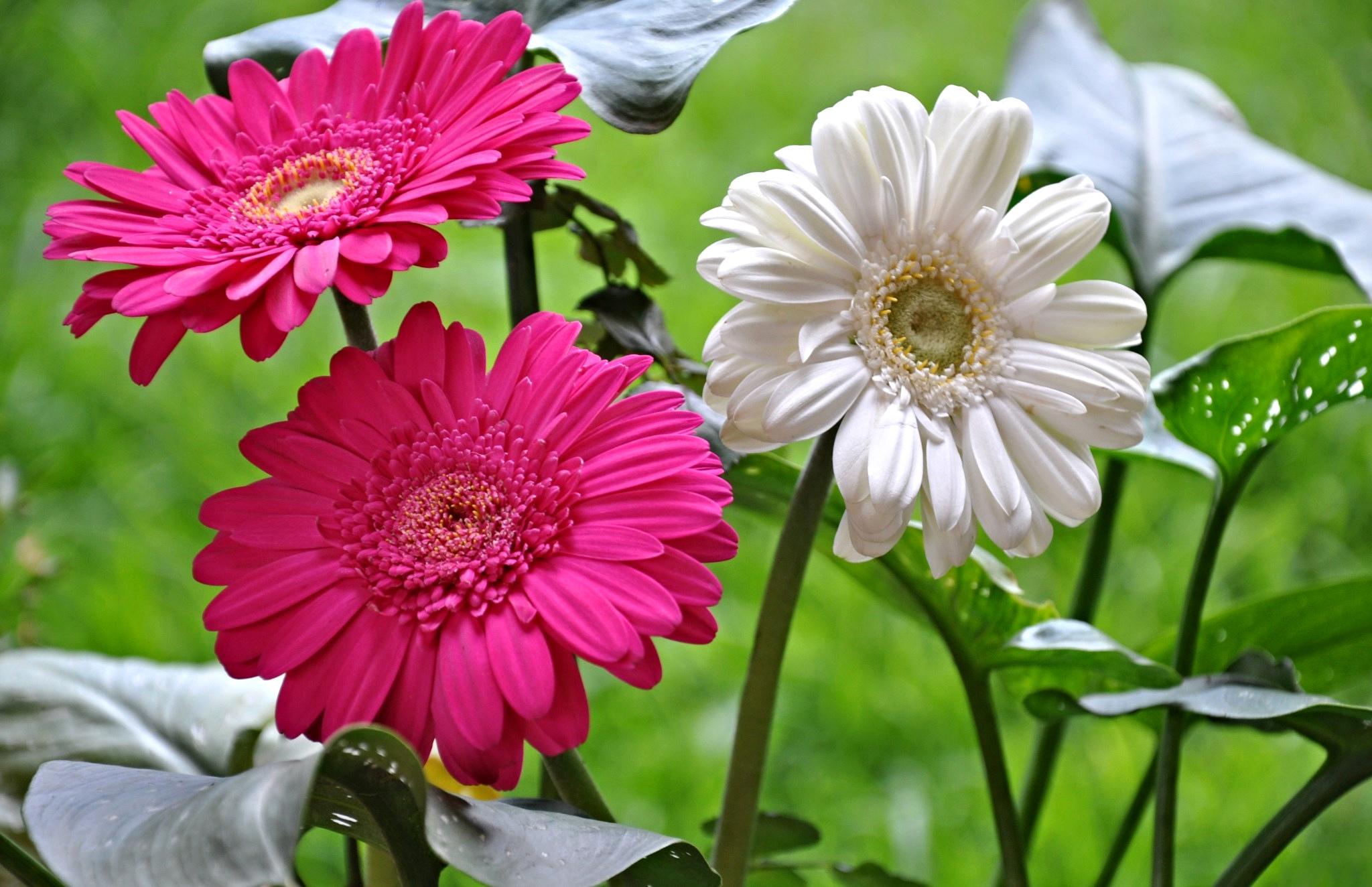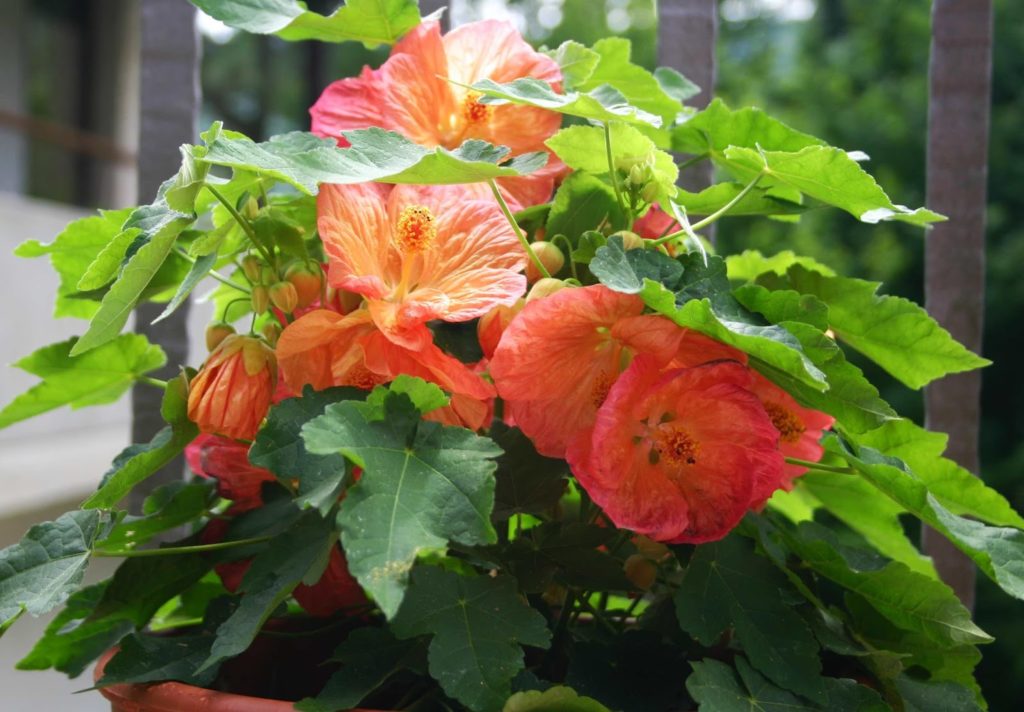Gerbera belongs to the perennial herbaceous plants of the Aster family. Its other name is Transvaal daisy or Transvaal daisy (this name is most often found in English literature). Many species of gerberas originate from South Africa and the island of Madagascar. They also grow in the tropics of Asia.
Gerbera can be grown in greenhouses (as it grows all over the world) - for cutting into bouquets. It is also planted in gardens and at home in pots, like a houseplant. Her the flower is very similar to chamomile, and the colors are very diverse. There is no only blue gerbera.
Gerbera care is simple. This flower loves light and warmth, with proper care for it and observing basic conditions, this houseplant will delight its owners with beautiful flowers for a long time. We will acquaint you with all the rules of care in our article.
Gerberas in a pot - how to care?
Before planting this plant, you need to pick up a pot. It should be primarily breathable, so the best pot for a gerbera flower is a clay pot. The optimum temperature of the content during the flowering of gerbera is 17-23 degrees. In winter, after flowering until February, it is 11-13 degrees.
Start leaving
Basically, all flowers after a flower shop require immediate replanting. But this does not apply to room gerbera. This flower itself is very delicate and takes time to adapt. Therefore, the transplant is carried out in two to three weeks.
Gerbera herself will let you know when to transplant it (the plant itself will cheer up, and the leaves will start up). This means that the flower is ready to be transplanted. In the store, the gerbera was in temporary soil, so after transplanting it should be fed with complex fertilizers - once every three days.
It must be borne in mind that the land needs to be changed completely, not counting the one that remained on the roots. Before planting, it is advisable to douse the pot with boiling water so as not to infect.
The nuances of care
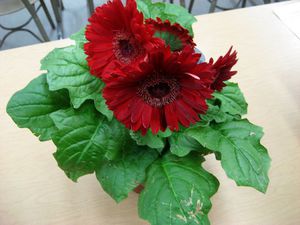 Lighting and location. Since the home gerbera plant is light-loving, and the duration of flowering depends on daylight, you need to choose a place where there is bright diffused lighting. The room must be well ventilated. At a warm temperature outside, it is better to take the gerbera to the balcony, since it loves warm fresh air very much.
Lighting and location. Since the home gerbera plant is light-loving, and the duration of flowering depends on daylight, you need to choose a place where there is bright diffused lighting. The room must be well ventilated. At a warm temperature outside, it is better to take the gerbera to the balcony, since it loves warm fresh air very much.- The soil. It should be slightly acidic. Leafy soil, peat and sand in a 2: 1: 1 ratio are best suited. Leafy soil is needed twice as much as peat and sand.
- To water a gerbera in a pot should be so that the soil is always moist - it cannot dry out. Watering should be carried out with settled water at room temperature, since it does not tolerate cold water. You need to water in the edge of the pot so that water does not get into the root outlet. Another way of watering is through a sump: pour water into it and drain the excess water after half an hour so that there is no stagnation of water, as this can lead to the formation of powdery mildew or fungal diseases.
- Spraying. At least once a day, you should spray your home-made gerbera (only leaves, not flowers) so that there are no drops in the outlet. When the indoor air is dry, especially during the heating season, gerbera grows poorly.
- Top dressing. The gerbera flower does not tolerate organic fertilizers; in no case should humus or humus be added to the soil. It should be fed 3-4 times a month only with complex mineral fertilizer.
- Transfer. It should be carried out as needed in early spring in a pot that is slightly larger than the previous one. If this flower is planted immediately in a large pot, then it will not bloom for a long time.
- Pruning. At home, gerbera does not need pruning. Flowers that have faded must be removed (it is better to break it, but not cut it off), as they will inhibit the growth of the plant.
- Reproduction. Gerberas can be propagated at home by seeds, cuttings or dividing the bush. Seeds are sown in spring in leafy soil with the addition of sand to a depth of 5 mm. After the appearance of the fourth leaflet, the plants are seated in separate pots. From sowing seeds to flowering - 11 months. By dividing, gerberas are propagated only after four years. Thus, gerbera of valuable and rare varieties are propagated.
Diseases and pests of indoor gerbera
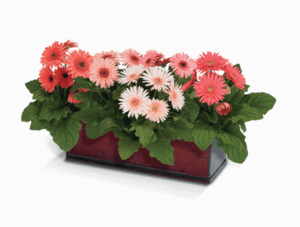 If the soil lacks moisture or there is dry air in the room, then on the gerbera spider mites may start... The first sign of this disease is yellowed leaves, which later fall off. To prevent this from happening, you need to regularly spray the leaves with water several times a day.
If the soil lacks moisture or there is dry air in the room, then on the gerbera spider mites may start... The first sign of this disease is yellowed leaves, which later fall off. To prevent this from happening, you need to regularly spray the leaves with water several times a day.
Powdery mildew appears with sudden changes in temperature, watering with cold water, or with repeated use of nitrogen-containing fertilizer.
With a lack of moisture, gerbera is affected by aphids and whitefly, and with an increase in moisture, white and gray mold. At home, when caring for a flower for such diseases diseased leaves are removed... Another care is as follows: it is necessary to reduce the humidity, and the flower itself should be sprayed with copper-containing solutions (solution of copper sulfate).
If you follow all the conditions for caring for a gerbera at home, then this flower will always delight the eye with its beautiful flowering.
Gerbera food
Gerber must be additionally fed. After planting, mineral fertilizers are applied after 7–8 weeks. Top dressing of this plant is carried out in spring twice a month, in summer - three times a month.
When pale areas appear on gerbera leaves (lack of magnesium), introducing magnesium sulfate solution - 10 g per 5 l of water.
Natural development cycle of exotic chamomile
To properly care for a room gerbera, you need to recreate natural environment for her at home. It looks like this:
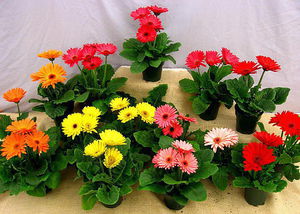 gerbera from late summer to late autumn pleases with beautiful flowers;
gerbera from late summer to late autumn pleases with beautiful flowers;- November - February the flower needs peace in order to gain strength for the next flowering;
- from mid-February, watering is increased, the number of dressings; at this time, the gerbera begins to grow actively;
- with the support of such a growth rhythm, after four years, the flower is replaced with a new one or rejuvenated.
Can a gerbera deprive a state of rest, but after two years she will get tired and such a flower will be unsuitable for further cultivation.
Among the different varieties of gerbera, in addition to home, there are also garden ones. They also have flowers in various shades and are as beautiful as indoor gerberas.
